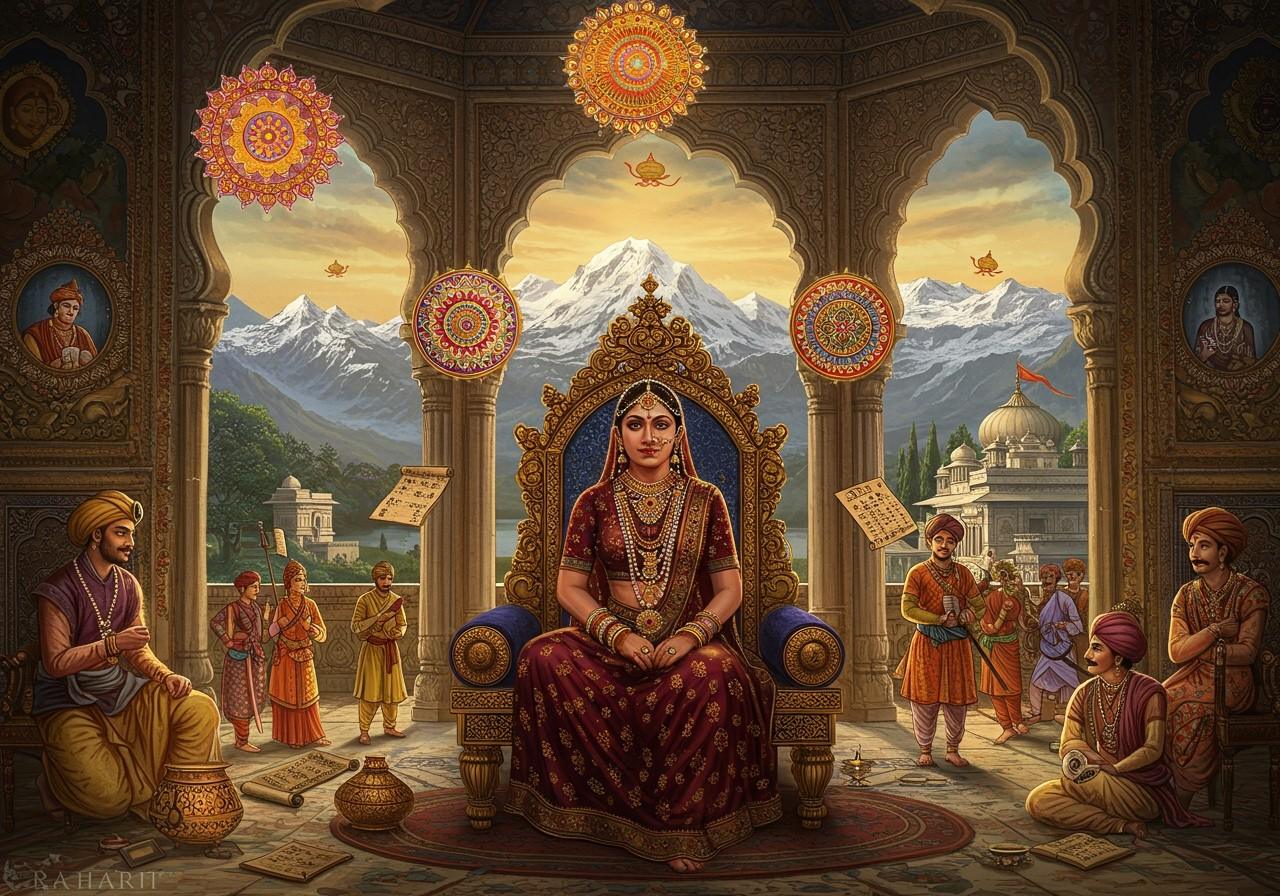
The history of Kashmir is a captivating narrative of kingdoms and empires, and at its core is the Rajatarangini, a 12th-century Sanskrit chronicle by Kalhana. This historical text details Kashmir’s rulers, offering insights into the region’s cultural and political evolution. Let’s delve into the key figures and events of the Rajatarangini to uncover Kashmir’s captivating legacy.
Kashmir’s Reigning Dynasties: A Chronicle of Power
Kalhana’s Rajatarangini unveils a series of influential dynasties that shaped Kashmir’s destiny. The chronicle commences with Asoka (around 3rd century BCE), the first historically verified ruler, providing a chronological account of 75 kings spanning 2268 years, starting with Yudhisthira and concluding with Gonanda I. The narrative then transitions to the Gonanda dynasty, believed to have connections to the Mahabharata. Subsequently, the Karkota dynasty emerges in the 7th century CE, marked by its consolidation of power and patronage of the arts. The Utpala dynasty, particularly under Avantivarman’s reign, made substantial contributions to art and architecture. The Lohara dynasty witnessed both expansion and conflict, with Queen Didda as a prominent female ruler. Kalhana meticulously portrays the rise and fall of each dynasty, providing historical context and significance. Other notable dynasties mentioned include the Pandava Dynasty, Naga Dynasty, and Karkota Dynasty, with rulers like Harnadeva, Bhagavanta, and Durlabhavardhana. The Maurya and Kushana dynasties also played significant roles, with rulers such as Ashoka and Kanishka, the latter known for hosting the Fourth Buddhist Council.
Key Figures and Events: Shaping Kashmir’s Narrative
The Rajatarangini offers a rich tapestry of influential figures and pivotal events. King Lalitaditya Muktapida of the Karkota dynasty stands out for his extensive military conquests and the prosperity he brought to Kashmir. Avantivarman of the Utpala dynasty is renowned for his contributions to art, architecture, and economic revival. Queen Didda’s reign during the Lohara dynasty demonstrates her strength and leadership amidst challenges. The chronicle also highlights other significant rulers such as Harnadeva, Bhagavanta, and Durlabhavardhana. Kalhana’s detailed accounts allow us to appreciate their contributions to Kashmir’s cultural and political landscape.
Poojn.in: Connecting You to Kashmir’s Royal Heritage
Poojn.in, India’s leading cultural goods and services store, offers a unique opportunity to connect with Kashmir’s rich royal heritage. We provide authentic ritual items and puja supplies, allowing you to honor the traditions and principles depicted in the Rajatarangini. Our carefully curated collection includes:
- Pure copper items like Ananda Kosha Kushi and Copper Kosha Kushi, resonating with traditional Kashmiri temple offerings.
- Handpicked ritual items aligned with ancient Kashmiri Shaivite traditions, enabling you to engage with historical practices.
- Premium dhoop and incense reminiscent of those used in Kashmir’s historic temples, creating an atmosphere of reverence.
- Sacred items for performing pujas according to Kashmiri Pandit customs, fostering a deeper connection with the region’s spiritual heritage.
- Gangajal from sacred rivers mentioned in the Rajatarangini, adding authenticity to your rituals.
- Traditional brass items and Tir Kathi used in Kashmiri temple rituals, bridging the gap between past and present.
- Pure cotton wicks and ghee for traditional aarti ceremonies, upholding the sanctity of ancient practices.
- Authentic kumkum and roli for tilak ceremonies, connecting you with the essence of Kashmiri traditions.
Visit www.poojn.in to discover our complete collection. We offer pan-India delivery with secure packaging and prompt service.
A Timeless Legacy: Reflecting on Kashmir’s Royal Past
Kalhana’s Rajatarangini serves as a timeless testament to Kashmir’s royal heritage. From the Gonanda to the Karkota, Utpala, and Lohara dynasties, each chapter unfolds the story of a region shaped by powerful rulers, cultural achievements, and resilience. This chronicle offers a glimpse into a vibrant history that continues to inspire and intrigue. By exploring these royal narratives, we gain a deeper appreciation for the enduring legacy of Kashmir’s glorious past.


